Restored by The Film Foundation’s World Cinema Project and Cineteca di Bologna in collaboration with Bahram Beyzaie. Funding provided by the Hobson/Lucas Family Foundation.

The World Cinema Project (WCP) preserves and restores neglected films from around the world. To date, 67 films from Africa, Asia, Eastern Europe, Central America, South America, and the Middle East have been restored, preserved and exhibited for a global audience. The WCP also supports educational programs, including Restoration Film Schools; intensive, results-oriented workshops allowing students and professionals worldwide to learn the art and science of film restoration and preservation. All WCP titles are available for exhibition rental by clicking "Book This Film."

RAID INTO TIBET
Director: Adrian Cowell
DIRECTOR OF PHOTOGRAPHY: Chris Menges
PRODUCER: George Patterson
COUNTRY OF PRODUCTION: UK
LANGUAGE: English/Tibetan with English subtitles
COLOR INFO: Black-and-White
RUNNING TIME: 28 minutes
PRODUCER: George Patterson
Restored by The Film Foundation’s World Cinema Project at Cineric Inc. laboratory in association with the Tibet Film Archive. Special thanks to the Cowell family.
In May 1964, three British filmmakers traveled with the Khampa guerrillas over a 20,000-foot pass into occupied Tibet from the remote Tsum region of Nepal and captured dramatic footage of an ambush on a Chinese military convoy. The footage was smuggled out and edited two years later in London, and officially released in 1966 to critical acclaim. Shot by Oscar-winning cinematographer Chris Menges (THE READER, LOCAL HERO, THE KILLING FIELDS), this documentary short is an important historical artifact, representing the only known footage of armed Tibetan resistance fighters in combat with the Chinese.
NOTES ON THE RESTORATION:
Restoration work was completed at Cineric in New York. The original 16mm camera negative was cleaned, repaired, then wet-gate scanned at 4K to eliminate scratches and other minor defects in the emulsion. The image was subsequently stabilized and digitally cleaned to remove dust, deep scratches, and other visible marks. Because of the extreme conditions in Tibet during the filming, Cineric implemented exposure compensation at the initial scanning of the raw material. Grading was performed by colorist Paul Ensby and supervised by Chris Menges at Technicolor London.
The original sound negative was also scanned and digitally cleaned to reduce background noise and remove clicks and pops. A new 35mm internegative with sound has been made for preservation, along with 35mm prints for conservation and access. In addition, a new HD master and DCP will be produced for digital screenings.
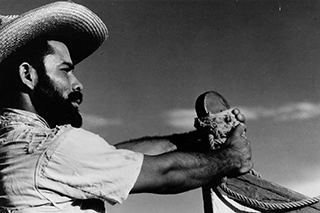
REDES
Director: Fred Zinnemann, Emilio Gómez Muriel
WRITTEN BY: Agustín Velázquez Chávez, Paul Strand
EDITING: Emilio Gómez Muriel, Gunther von Fritsch
DIRECTOR OF PHOTOGRAPHY: Paul Strand
ADAPTED BY: Emilio Gómez Muriel, Fred Zinnemann and Henwar Rodakiewicz
MUSICAL DIRECTOR: Silvestre Revueltas
SOUND: Roberto, Joselito Rodriguez
FROM: Cinemateca de la UNAM, Mexico
STARRING: Silvio Hernández (Miro), David Valle González (Monopolist), Rafael Hinojosa (Politician), Antonio Lara (El Zurdo), Miguel Figueroa and native fishermen
COUNTRY OF PRODUCTION: Mexico
LANGUAGE: Spanish with French and English subtitles
COLOR INFO: Black and White
RUNNING TIME: 61 minutes
PRODUCTION COMPANY: Secretaría de Educación Pública
Restored in 2009 by Cineteca di Bologna/L'Immagine Ritrovata laboratory, in association with The Film Foundation’s World Cinema Project and Filmoteca de la UNAM. Restoration funded by Armani, Cartier, Qatar Airways and Qatar Museum Authority.
The film – the first (and last) of its kind – was expected to play a small part in the Government’s plan to educate millions of illiterate citizens throughout the enormous country and bring them out of their isolation. […] The picture was to be made for the Federal Department of Fine Arts, headed by composer Carlos Chávez. The producer would be Paul Strand. […] We had recruited practically all ‘actors’ from among the local fishermen, who needed to do no more than be themselves. They were splendid and loyal friends, and working with them was a joy. In addition to acting, they carried all the equipment, rowed the boats and did a multitude of other jobs, earning more money than ever before – forty-five cents per day, per man – and enjoying themselves hugely. […] I’m told that some years later the Nazis found the negative in Paris and burned it. A few prints still exist. –Fred Zinnemann
NOTES ON THE RESTORATION:
The restoration of Redes used the best surviving materials, namely a 35mm safety duplicate negative and a positive print preserved at the Filmoteca de la UNAM in Mexico. The digital restoration produced a new 35mm internegative.
Image: © Courtesy of Filmoteca de la UNAM
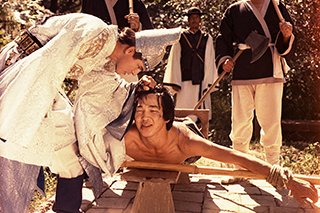
REVENGE
MEST
Director: Ermek Shinarbaev
WRITTEN BY: Anatoli Kim
EDITING: Polina Stein
DIRECTOR OF PHOTOGRAPHY: Sergei Kosmanev
PRODUCER: Habibur Rahman Khan
MUSICAL DIRECTOR: Vladislav Shute
STARRING: Alexandre Pan (Sungu, the poet), Oleg Li (King-Monk), Valentin Te (Novice), Lubove Germanova (Elza), Rasim Jakibaev (Tsai)
COUNTRY OF PRODUCTION: Kazakhstan
LANGUAGE: Russian with French and English subtitles
COLOR INFO: Color
RUNNING TIME: 96 minutes
PRODUCTION COMPANY: Kazakhfilm Studios
SET DESIGNER: Elena Eliseeva
PRODUCER: Habibur Rahman Khan
Restored in 2010 by Cineteca di Bologna/L'Immagine Ritrovata laboratory, in association with The Film Foundation’s World Cinema Project, the Kazakhfilm Studio, the State Archive of the Republic of Kazakhstan and Ermek Shinarbaev. Restoration funded by Armani, Cartier, Qatar Airways and Qatar Museum Authority.
In a rage, a teacher murders a boy. Another boy is bred, for one sole purpose: to avenge his brother’s death. Kazakh master Ermek Shinarbaev’s close collaboration with the Korean-Russian writer Anatoli Kim yielded three great films, the most remarkable of which is this beautiful, profoundly unsettling film. A true odyssey, geographically and psychologically. One of the greatest films to emerge from the Kazakh New Wave, and one of the toughest.
(Kent Jones, May 2010)
In the beginning of the 40s, hundreds of thousands of Koreans that had lived in the Russian Far East since the XIX century were forcibly displaced overnight according to Stalin’s orders. They were regarded as traitors and public enemies. Women, children, old people, were sent away with no explanation. The Korean diaspora, with a population of over a million, has been a forbidden topic for many years. Revenge is the first film telling the story of their tragedy.
(Ermek Shinarbaev, May 2010)
NOTES ON THE RESTORATION:
The restoration of Revenge, used the original camera negative, the sound negative and a positive print provided by the Kazakhfilm Studio and held at the State Archive of the Republic of Kazakhstan. Special thanks to director Ermek Shinarbaev for actively participating in the restoration.
Image: © Courtesy of Kazakhfilm Studio
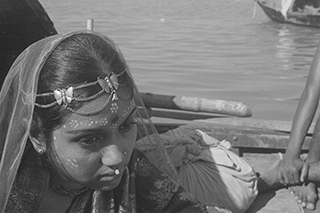
River Called Titas, A
TITAS EKTI NADIR NAAM
Director: Ritwik Ghatak
WRITTEN BY: Advaita Malla Burman, Ritwik Ghatak
EDITING: Basheer Hussain
DIRECTOR OF PHOTOGRAPHY: Baby Islam
PRODUCER: Habibur Rahman Khan
MUSICAL DIRECTOR: Ustad Bahadur Khan
STARRING: Kabari Choudhury (Rajar Jhi), Roushan Jamil (Mother), Probir Mitra (Kishore), Ritwik Ghatak (Tilakchand), Rani Sarkar (Mungli), Sufia Rustam (Udaytara), Rosi Smad (Basanti)
COUNTRY OF PRODUCTION: India
LANGUAGE: Bengali with French/English subtitles
COLOR INFO: Black and White
RUNNING TIME: 158 minutes
ON COMPANY: Ribatan Ghatak/Ritwik Memorial Trust; National Film Archive of India; Bundesarchiv-Filmarchiv
PRODUCER: Habibur Rahman Khan
Restored in 2010 by Cineteca di Bologna /L’Immagine Ritrovata laboratory, in association with Ritwik Memorial Trust, the National Film Archive of India, and The Film Foundation’s World Cinema Project. Additional film elements provided by the Bundesarchiv-Filmarchiv. Restoration funded by Doha Film Institute.
If you were eighteen years old, growing up in New Delhi, a student of cinema, a cinephile or a plain film snob, it was given that you would swoon over the film-maker Ritwik Ghatak and spend endless hours in the Delhi University canteen discussing his films, his alcoholism, and his eventual death from Tuberculosis. An ‘avant garde’ Writer and Director, Ghatak had caught the imagination of many of us who carried Mao’s Red Book’ and quoted liberally from it (in English) at the drop of a hat. After all, didn’t Ghatak (a card carrying Communist) film the extreme poverty and the cultural extinction of Bengal by Imperialism? Because of the political ‘din’ surrounding much of Ghatak’s work, ironically the work itself, as opposed to the man’s personality and politics, got neglected by the legion of his die-hard fans (me included!). It was only years later when I saw his epic, A River Called Titas, that I swooned for totally different reasons. The film is a work of pure genius. A passionate elegy for a dying culture, it moved me profoundly, and continues to haunt me to this day. Based on a novel by the Bengali author Advaita Barman and adapted for the screen by Ghatak, A River Called Titas, tells the raw and powerful story of a dying river and a dying culture.
–Deepa Mehta, May 2010
NOTES ON THE RESTORATION:
The restoration of A River called Titas used the camera and sound negatives and a positive print provided by the Ritwik Memorial Trust and held at the National Film Archive of India. As the original negative is incomplete and some reels were severely damaged, a combined lavender and a positive print provided by the Bundesarchiv-Filmarchiv were also used. The digital restoration produced a new 35 mm internegative.
Image: © Courtesy of Ritaban Ghatak - Ritwik Memorial Trust
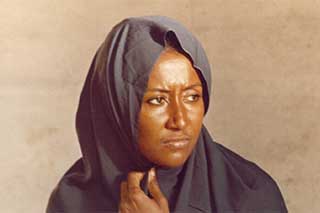
SAMBIZANGA
Director: Sarah Maldoror
EDITING: Georges Klotz
DIRECTOR OF PHOTOGRAPHY: Claude Agostini
STARRING: Elisa Andrade, Domingos De Oliveira, Jean M’Vondo, Adelino Nelumba, Benoît Moutsila, Tala Ngongo, Lopes Rodrigues, Henriette Meya, Manuel Videira
COUNTRY OF PRODUCTION: Angola, France
LANGUAGE: Portuguese, Lingala and Kimbundu with English subtitles
COLOR INFO: Color
RUNNING TIME: 96 minutes
Restored by The Film Foundation’s World Cinema Project and Cineteca di Bologna at L’Image Retrouvée in association with Éditions René Chateau and the family of Sarah Maldoror.
Funding provided by Hobson/Lucas Family Foundation.
This restoration is part of the African Film Heritage Project, an initiative created by The Film Foundation’s World Cinema Project, the Pan African Federation of Filmmakers and UNESCO – in collaboration with Cineteca di Bologna – to help locate, restore, and disseminate African cinema.
NOTES ON THE RESTORATION:
Restored in 4K from the original 35mm negatives. Color grading was supervised by Annouchka De Andrade and cinematographer Jean-François Robin.
With special thanks to Annouchka De Andrade and Henda Ducados.
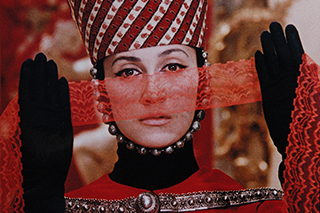
SAYAT NOVA
COLOR OF POMEGRANATES, THE
Director: Sergei Parajanov
WRITTEN BY: Sergei Parajanov
EDITING: Maria Ponomarenko
DIRECTOR OF PHOTOGRAPHY: Suren Shakhbazian
MUSICAL DIRECTOR: Tigran Mansurian
SOUND: Yuri Sayadyan
ART DIRECTOR: Stepan Andranikian, Mikhail Arakelian
STARRING: Sofiko Chiaureli (the Poet as a youth, the Poet’s Beloved, the Nun in White Lace, the Angel of the Resurrection, the Pantomime), Melkon Alekian (the Poet as a child), Vilen Galustian (the Poet as a monk), Georgi Gegechkori (the Poet in Old Age), Hovhannes (Onik) Minsasian (the King), Spartak Bagashvili (the Poet’s father), Medea Japaridze (the Poet’s mother), Grigori Margarian (Sayat Nova’s teacher)
COUNTRY OF PRODUCTION: Armenia
LANGUAGE: Armenian
COLOR INFO: Color
RUNNING TIME: 77 minutes
Restored by Cineteca di Bologna/L’Immagine Ritrovata laboratory and The Film Foundation’s World Cinema Project, in association with the Cinema Foundation of Armenia and Gosfilmofond of Russia. Restoration funded by the Material World Foundation.
And what about the fate of the picture now? Armenia showed this film, sent people to see it. I wouldn’t say that the people understand the picture, but they go as if to a celebration. […] Every layer of society is going – they sense their genes in the picture. It wasn’t the subject, it wasn’t the established canons of the fate of the poet – conflict with the tsar, conflict at court, the banishing of the poet from the palace, wordly life, the monastery – these were not the point of my scenario, but the colors, the accessories, the details, of the daily life that accompanied the poetry. Here I was trying to portray the art in life, rather than portray life in art. The other way around, so that art is reflected in life. […] The picture is very primitive in its structure: there was childhood, there was youth, there was love, there was the monastery, there were the stones. The beloved was a stone, the cell was the beloved, the beloved, her breast is glorified in verse, the rose is glorified in verse. Then there was the thought: my throat is dry, I am ill. The poet dies. Everything is so simple, clear, as in the fate of a great poet, an ashugh, a minstrel.
- Sergei Parajanov
Watching Sergei Parajanov’s The Color of Pomegranates, or Sayat Nova, is like opening a door and walking into another dimension, where time has stopped and beauty has been unleashed. On a very basic level, it’s a biography of the Armenian poet Sayat Nova, but before all else it’s a cinematic experience, and you come away remembering images, repeated expressive movements, costumes, objects, compositions, colors. Sayat Nova lived in the 18th century, but the look and movement of the film seem to have come out of the middle ages or an even earlier time: Parajanov’s cinematic tableaux feel like they’ve been carved in wood or stone, and the colors seem to have naturally materialized from the images over hundreds of years. There’s nothing else quite like this picture. For many years, it’s been a dream to see The Color of Pomegranates restored to the form originally intended by Parajanov. This restoration represents years of painstaking work by many people. As always, I would like to thank our colleagues and partners at the Cineteca di Bologna and L’Immagine Ritrovata as well as all the individuals and organizations who have supported this challenging project and dedicated an enormous amount of time and energy to preserve Parajanov’s oeuvre.
- Martin Scorsese
NOTES ON THE RESTORATION:
45 years after its Armenian release, the film is premiered at Cannes Classics in its restored version, as Parajanov originally conceived it. Both the Armenian (also known as “Parajanov’s cut”) and Russian (Sergei Yutkevic’s) versions have been preserved and restored. The restoration used the original camera negative preserved at Russia’s Gosfilmofond, as well as the 35mm dupe negative held by the National Cinema Centre of Armenia.
The original camera negative has been scanned in 4K by Gosfilmofond in Russia and restored by L’Immagine Ritrovata in Bologna. The sound restoration was made from the original magnetic track, preserved by Gosfilmofond, in addition to the Armenian reference print. A vintage print of the film, produced on Orwo stock and preserved by the Harvard Film Archive, was used as a reference for the grading phase.
The Russian version of The Color of Pomegranates has also been preserved for posterity.
Image: © Courtesy of the Parajanov Museum, Yerevan
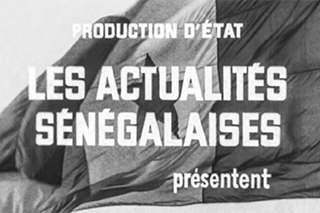
SÉNÉGAL AN XVI
Director: Babacar Gueye and Orlando Lopez
COUNTRY OF PRODUCTION: Senegal
LANGUAGE: French with English subtitles
COLOR INFO: Black and White
RUNNING TIME: 21 minutes
Restored by The Film Foundation’s World Cinema Project and Cineteca di Bologna at L’Immagine Ritrovata laboratory, in collaboration with the Ministère de la Culture et du Patrimoine Historique de Sénégal – Direction du Cinéma. Restoration funded by the Hobson/Lucas Family Foundation.
This restoration is part of the African Film Heritage Project, an initiative created by The Film Foundation's World Cinema Project, the Pan African Federation of Filmmakers and UNESCO―in collaboration with Cineteca di Bologna―to help locate, restore, and disseminate African cinema.
NOTES ON THE RESTORATION:
The 4K restoration was completed using a 16mm print preserved by the Direction du Cinéma in Senegal. With special thanks to Tiziana Manfredi and Marco Lena.
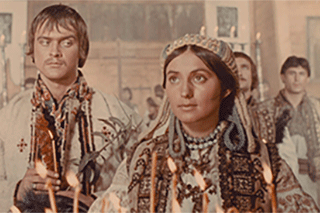
SHADOWS OF FORGOTTEN ANCESTORS
TINI ZABUTYKH PREDKIV
Director: Sergei Parajanov
WRITTEN BY: Sergei Parajanov, Ivan Chendej
EDITING: Marfa Ponomarenko
DIRECTOR OF PHOTOGRAPHY: Yuri Ilyenko
MUSICAL DIRECTOR: Miroslav Skorik
STARRING: Ivan Mikolaychuk, Larisa Kadochnikova,Tatyana Bestayeva, Spartak Bagashvili, Nikolay Grinko, Leonid Yengibarov
COUNTRY OF PRODUCTION: Ukraine
LANGUAGE: Ukrainian with English subtitles
COLOR INFO: Color
RUNNING TIME: 96 minutes
Restored by The Film Foundation’s World Cinema Project and Cineteca di Bologna at L’Immagine Ritrovata laboratory, in association with the Dovzhenko Film Studio and in collaboration with the Oleksandr Dovzhenko National Centre. Special thanks to Olena Honcharuk and Daniel Bird.
Funding provided by the Hobson/Lucas Family Foundation
NOTES ON THE RESTORATION:
SHADOWS OF FORGOTTEN ANCESTORS was scanned in 4K by Fixafilm laboratory in Warsaw using a low contrast 35mm print donated by Eric Liknaitzky to Daniel Bird and now deposited at the Austrian Film Museum. A vintage print for the Harvard Film Archive was used as a reference for grading. Restoration work was completed in 2024 by L'Immagine Ritrovata.
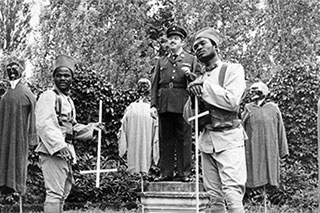
SOLEIL Ô
OH, SUN!
Director: Med Hondo
WRITTEN BY: Med Hondo
EDITING: Michèle Masnier, Clément Menuet
DIRECTOR OF PHOTOGRAPHY: François Catonné, Jean-Claude Rahaga
STARRING: Robert Liensol, Théo Légitimus, Gabriel Glissand, Mabousso Lô, Alfred Anou, Les Black Echos, Ambroise M’Bia, Akonio Dolo
COUNTRY OF PRODUCTION: Mauritania
LANGUAGE: French with English subtitles
COLOR INFO: Black and White
RUNNING TIME: 98 minutes
PRODUCTION COMPANY: Grey Films, Shango Films
SET DESIGNER: Med Hondo
Restored by Cineteca di Bologna at L’Immagine Ritrovata laboratory in collaboration with Med Hondo. Restoration funded by the Hobson/Lucas Family Foundation and The Film Foundation’s World Cinema Project.
This restoration is part of the African Film Heritage Project, an initiative created by The Film Foundation’s World Cinema Project, the Pan African Federation of Filmmakers and UNESCO – in collaboration with Cineteca di Bologna – to help locate, restore, and disseminate African cinema.
I identify with Med Hondo in terms of anger and I share his obsession with history and self-reliance.
--Haile Gerima
When I wrote my script I did not have an audience in mind, I was living in France and experiencing what being a minority felt like. I had to yell and free myself. Writing the script of Soleil Ô was an authentic act of rage and liberation.
Once the script was ready, I gathered a crew of technicians and a team of African actors. Then I went to see some film processing companies and told them “Here I am, I don’t have a penny in my pocket but I want to make a film, let me have some raw film, I will reimburse you on an installment plan, and if I fail to do so you can put me in jail.” They agreed. The film cost $ 30,000 and it took almost two years to shoot because my actors were not always available.
There are different perceptions of an image. Soleil Ô is crystal clear and is neither intellectual nor sophisticated. It has often happened that those who understood it best were illiterate. When it was shown in Algeria, because the audience was completely able to identify with the film, the proletarians explained it to the intellectuals.
My main character could be a garbage collector, a student, or a teacher. His status does not prevent him from being affected in the same manner by the general conditions of history within a racist society. To be a Black expatriate is an identity. Soleil Ô derives from the African oral tradition. It depicts a unique reality. There is no dichotomy between style and content; here it is the content which imposes a style. I wanted to describe several people through one person instead of using a group of people. In my country, when people talk about a specific issue, they may digress and come back to their initial topic. Black cultures have a syntax which has nothing to do with Cartesian logic or that of other civilizations.
-- Med Hondo
NOTES ON THE RESTORATION:
The restoration of Soleil Ô was made possible through the use of a 16mm reversal print, and 16mm and 35mm dupe negatives deposited by Med Hondo at Ciné-Archives, the audiovisual archive of the French Communist Party, in Paris.
The reversal print was scanned at 4K and digital restoration eliminated dirt, scratches and mold. Despite excellent photographic quality overall, a few sequences appear slightly out-of-focus; this is true to the original cinematography.
A vintage 35mm print preserved at the Harvard Film Archive was used as a reference. Color grading was supervised by cinematographer François Catonné.
The original 16mm magnetic tracks were used for the audio restoration. After digitization, the soundtrack was cleaned and background noise reduction eliminated all noticeable wear marks; particular attention was devoted to the specific dynamics and features of the original soundtrack, namely percussion and chants. Reel 4 as well as the main and end titles were missing, so these were restored using the original 35mm soundtrack. The latter was also used to replace the 16mm mag tracks in the parts where the mix differed slightly from the vintage 35mm print.

STARS IN BROAD DAYLIGHT
NUJUM AL-NAHAR
Director: Ossama Mohammed
WRITTEN BY: Ossama Mohammed
EDITING: Antoinette Azarieh
DIRECTOR OF PHOTOGRAPHY: Abdulqader Sharbaji
STARRING: Abdellatif Abdul Hamid, Zuhair Abdulkarim, Sabah As-Salem, Saad Eddin Baqdoones, Fuad Ghazi, Muhsen Ghazi, Radwan Jamoos, Zuhair Ramadan, Maha Saleh
COUNTRY OF PRODUCTION: Syria
LANGUAGE: Arabic with English subtitles
COLOR INFO: Color
RUNNING TIME: 105 minutes
PRODUCTION COMPANY: National Film Organization
Restored by The Film Foundation’s World Cinema Project and Cineteca di Bologna at L’Immagine Ritrovata laboratory, in collaboration with Ossama Mohammed. Funding provided by the Hobson/Lucas Family Foundation.
NOTES ON THE RESTORATION:
The restoration used the best surviving element outside Syria, a 35mm positive print acquired by a German television network in the 1990s. Ossama Mohammed approved the grading. Restoration work was completed in 2024 by L’Immagine Ritrovata.
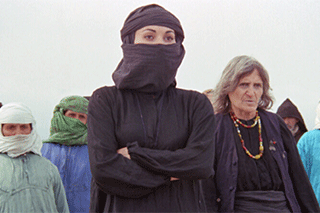
STRANGER AND THE FOG, THE
GHARIBEH VA MEH
Director: Bahram Beyzaie
WRITTEN BY: Bahram Beyzaie
EDITING: Bahram Beyzaie
DIRECTOR OF PHOTOGRAPHY: Mehrdad Fakhimi, Firooz Malekzadeh
STARRING: Parvaneh Massoumi, Khosrow Shojazadeh, Manuchehr Farid, Esmat Safavi, Sami Tahassoni, Valiyollah Shirandami, Reza Yaghuti, Esmaeel Poor Rez, Mohammad Pour Reza
COUNTRY OF PRODUCTION: Iran
LANGUAGE: Farsi version with English subtitles
COLOR INFO: Color
RUNNING TIME: 140 minutes
NOTES ON THE RESTORATION:
THE STRANGER AND THE FOG was restored in 4K using the original camera and sound negatives and was carried out at L'Immagine Ritrovata in 2023. Color grading was supervised by Bahram Beyzaie. With special thanks to Ehsan Khoshbakht and Mozhdeh Shamsai.
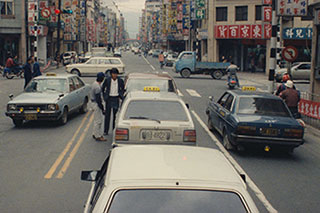
TAIPEI STORY
QING MEI ZHU MA
Director: Edward Yang
WRITTEN BY: Edward Yang, Hou Hsiao-hsien, Chu T’ien-wen
DIRECTOR OF PHOTOGRAPHY: Yang Wei-han
PRODUCER: Hou Hsiao- hsien, Lin Rong-feng
STARRING: Hou Hsiao-hsien (Lung), Tsai Chin (Chin), Lai Teh-nan (Chin's father), Chen Su-fang (Mrs. Mei), Wu Nien-Jen (Taxi driver), Ko I-Chen (Architect), Ko Su-wun (Gwan)
COUNTRY OF PRODUCTION: Taiwan
LANGUAGE: Madarin with English subtitles
COLOR INFO: Color
RUNNING TIME: 119 minutes
PRODUCER: Hou Hsiao- hsien, Lin Rong-feng
Restored by The Film Foundation’s World Cinema Project at Cineteca di Bologna/L’immagine Ritrovata laboratory in association with the Cinémathèque Royale de Belgique and Hou Hsiao-hsien.
